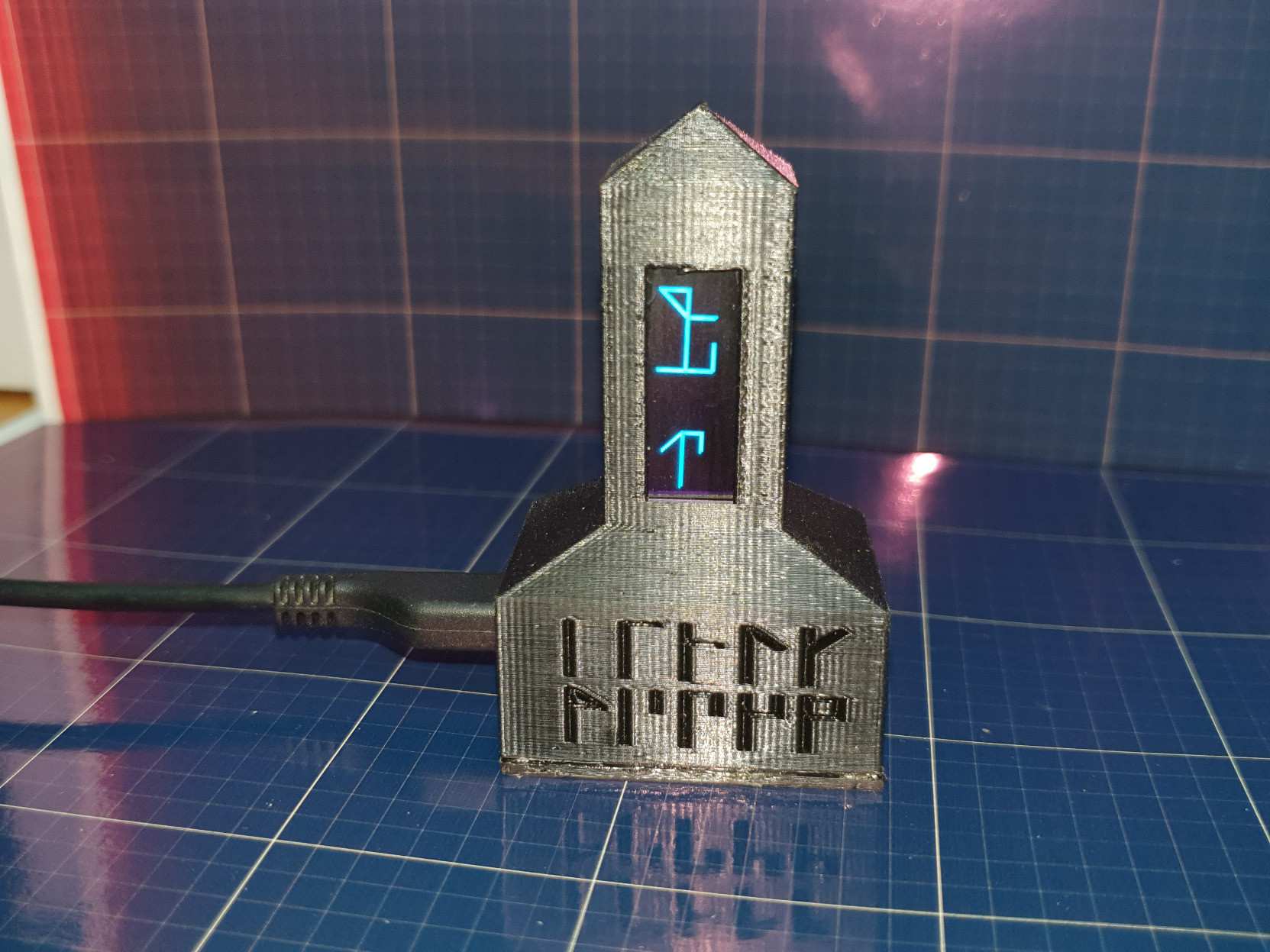Clive Thompson
clive@saturation.social"Cistercian Numbers" are incredibly cool
It's a rare numeric system designed by 13th century monks
Each number is a based on a single vertical stick, with patterns you draw in all four quadrants off it -- top right, top left, bottom right, bottom left
A single glyph can represent a number from 1 to 9,999
It's in my recent weekly "Linkfest" newsletter, here: https://buttondown.email/clivethompson/archive/linkfest-3-cisterian-numbers-robots-that-hug-and/
Want to subscribe? Pay-what-you-want here: https://buttondown.email/clivethompson
I call it "The opposite of doomscrolling"
Shield Maiden
Judeet88@home.social@clive It kind of reminds me a bit of Pitman's shorthand...
Smörhuvud (he/surprise me)
guncelawits@mastodon.social@clive Tangential: I teach this to every nine-year old I get near: https://en.m.wikipedia.org/wiki/Finger_binary
Brian Dear
brianstorms@mastodon.social@clive In college I created a similar-looking runic alphabet to take notes in class. It soon got sophisticated as I not only had symbols for a-z and 0-9, but I created symbols for common word endings like “ing” and made single symbols for letter combos like “st” and “br” etc. I supose it was a kind of shorthand but man did it work. I could take notes in class and keep right up with the teacher. Filled notebooks with this stuff. Other students would give me “wtf” looks when they saw my notes lol!
gallaugher
gallaugher@mastodon.worldMakers of obscure clocks, Clive offers up ideas for your next project. Cistercian Numbers give off a serious mystical, elvish vibe. Like a clock Gandalf would have in his den.
Isaac
isaaccp@kolektiva.social@clive Interesting. It looks like the source of inspiration for the glyphs they used in the videogame Tunic last year.
Vincent Leeuw
cyhwuhx@mstdn.social@clive I wouldn't be at all surprised if it turns out the Miller brothers used this as their inspiration for the D'Ni alphabet/numerals in Riven/Myst.
Ellane
ellane@pkm.social@clive That is up with the COOLEST darn things I’ve ever seen!! Secret code nerd from waaaay back. I’ve been writing in QuikScript (a derivative of George Bernard Shaw’s Shavian) for 40 years, and I’m stoked to *finally* have a number system to add to that. Incredible!
I agree with the commenter who suggested a weighted version for people with #dyslexia. It’s a great idea, and won’t be hard to do.
Deb has moved! (see profile) 🇨🇦
deborahh@mstdn.ca⬆️ @clive
Cistertian numbers?
oddly compelling! 👍
Up next: a dyslexic-friendly version
(Where left and right are not perfect mirror images, and the whole thing is visually weighted so it doesn't 'spin'? ;-> )
Extreme Electronics
Extelec@mstdn.socialFlaming Cheeto
PizzaDemon@mastodon.online@clive that last line means the Predator's bomb is about to go off
DrKiki
Drkiki@mastodon.social@clive this is fascinating. So, 1111 would look like a capital I in a serif font.
macdarabutler
macdarabutler@mastodon.ie@clive Those monks must have had a lot of time in their hands coming up with this stuff 🤣
Mike
mike@outpoa.stI’ve been using these for note-taking at work for about two years now. I think I discovered them by accident on Wikipedia, and spent a few hours practicing and learning them.
They’re really useful for writing down things that are sensitive (phone numbers, account numbers) that I need to refer to but wouldn’t want someone passing by, or sitting opposite me, to be able to read at a glance.
Hansup (non-active)
hansup@mastodon.social@clive oh, interesting system! But no zero? Nothing did not exist in their world?
Tim Beauchamp
Tbeauchamp@techhub.social@clive This is the coolest thing I have seen so far in 2023.
Clive Thompson
clive@saturation.socialYes!
My sister, who's 8 years older than me, learned Pitman when was training in "secretarial sciences" at Ryerson college in Toronto back in the early 80s
She still knows it today
Clive Thompson
clive@saturation.socialThat is incredibly cool!
I knew a few other nerds who created their own custom shorthand systems -- they looked rad
Rob Fulwell
rob_fulwell@techhub.social@guncelawits @clive check out the origin of sexagesimal (counting to 60 on the hands):
https://en.m.wikipedia.org/wiki/Sexagesimal
chexum
chexum@hachyderm.io@clive @isaaccp I’ve heard Korean is a modern logical writing as well. It’s interesting how easy writing letters and numbers could have been if we were able to invent new ones. I wonder how negative numbers would be shown. I would have preferred the four locations in an (anti)clockwise way. Also, grouping by four digits is not helping SI prefixes.
Clive Thompson
clive@saturation.socialyeah, that does sort of dominate, that part of the glyphs, doesn't it
Clive Thompson
clive@saturation.socialNot sure! Maybe they don't? Maybe they didn't really need to think often in numbers beyond that?
Clive Thompson
clive@saturation.socialOoooo that's awesome!!
You will dig this, which @Extelec just showed me: https://extkits.co.uk/product/cypher-of-the-monks-clock/
Mike
mike@outpoa.stI’d never heard of Quikscript until seeing your post. Any suggestions on a good way to learn it? What’s the learning time/difficulty like compared with shorthand?
I’ve been meaning to learn Teeline shorthand forever but I’ve never got past the “buying a few second-hand books and thinking about it” stage; Quikscript may be a better/easier option.
Clive Thompson
clive@saturation.socialGood question! Possibly not. In the medieval period, most Christian thinkers were still quite unsettled by zero -- and its related mathematical concept, infinity -- since the concepts of nothingness and infinity seemed to impinge, dangerously, on God's terrain
It's why medieval math boomed in Islamic and indian areas, but not in christian ones
So they may have been avoiding zero
Nice short essay on it https://cambriamathtutors.com/zero-christianity/
@cgseife's book "Zero" is a *fab* exploration of this
Shield Maiden
Judeet88@home.social@clive I deeply regret not keeping up with mine...I used to be really good and could even use it for taking down French! I mostly used it in lectures and was secretary at a university sit-in as I could also touchtype really fast and accurately (well before computers!).
Clive Thompson
clive@saturation.socialchexum
chexum@hachyderm.ioFahim Farook
fThank you for illuminating at least one mystery from that time period 🙂



